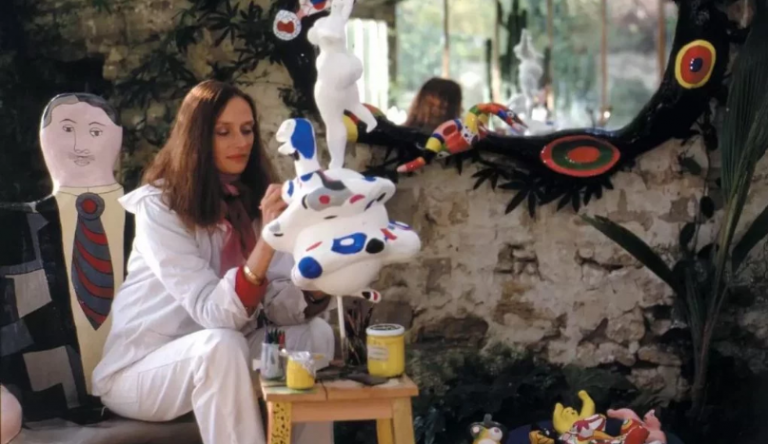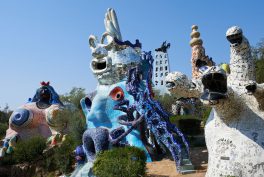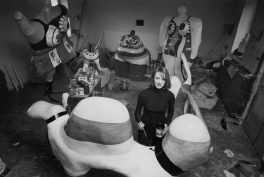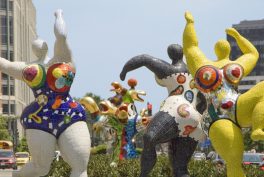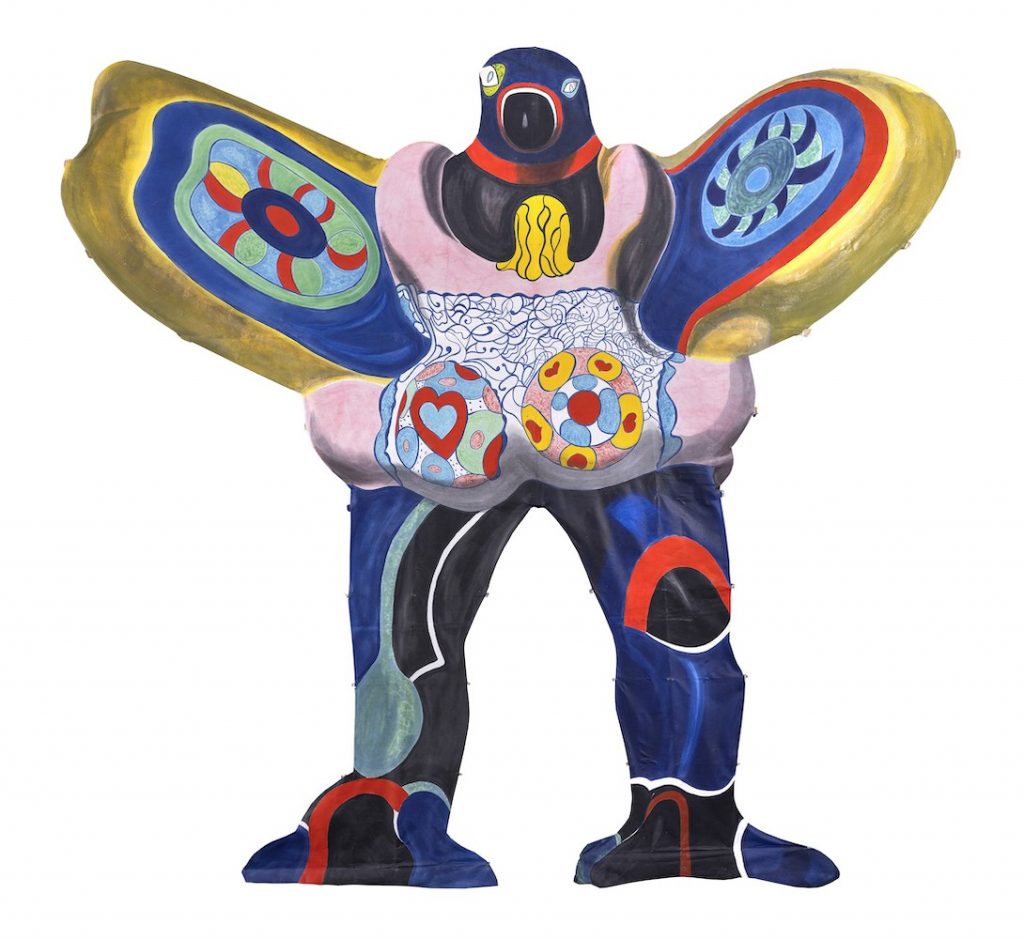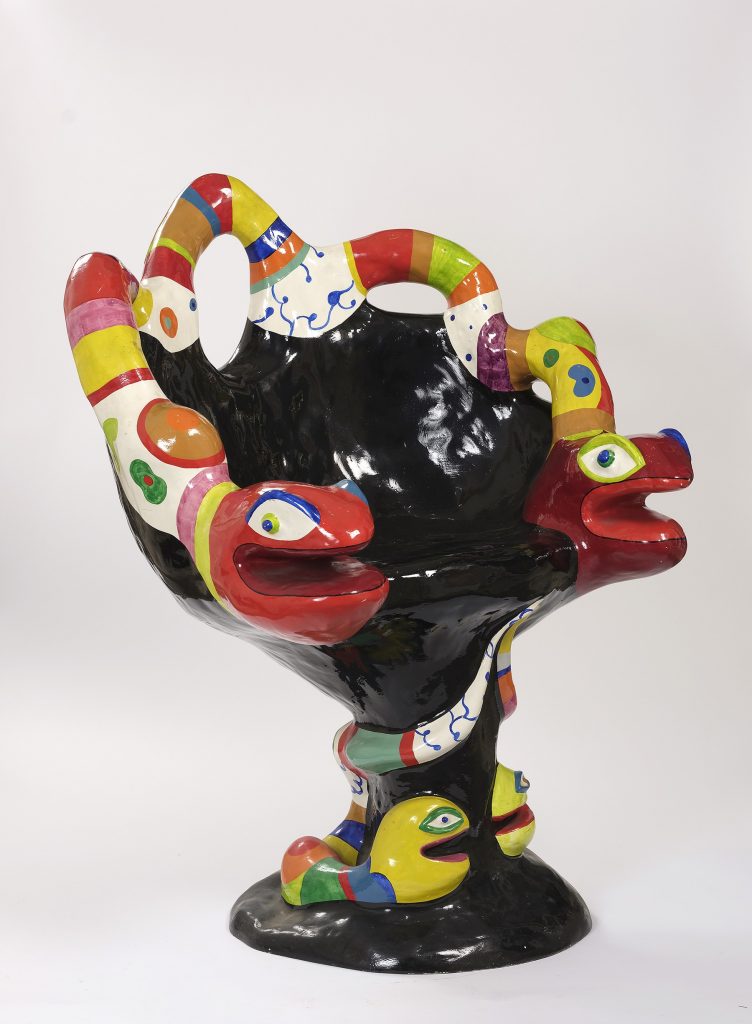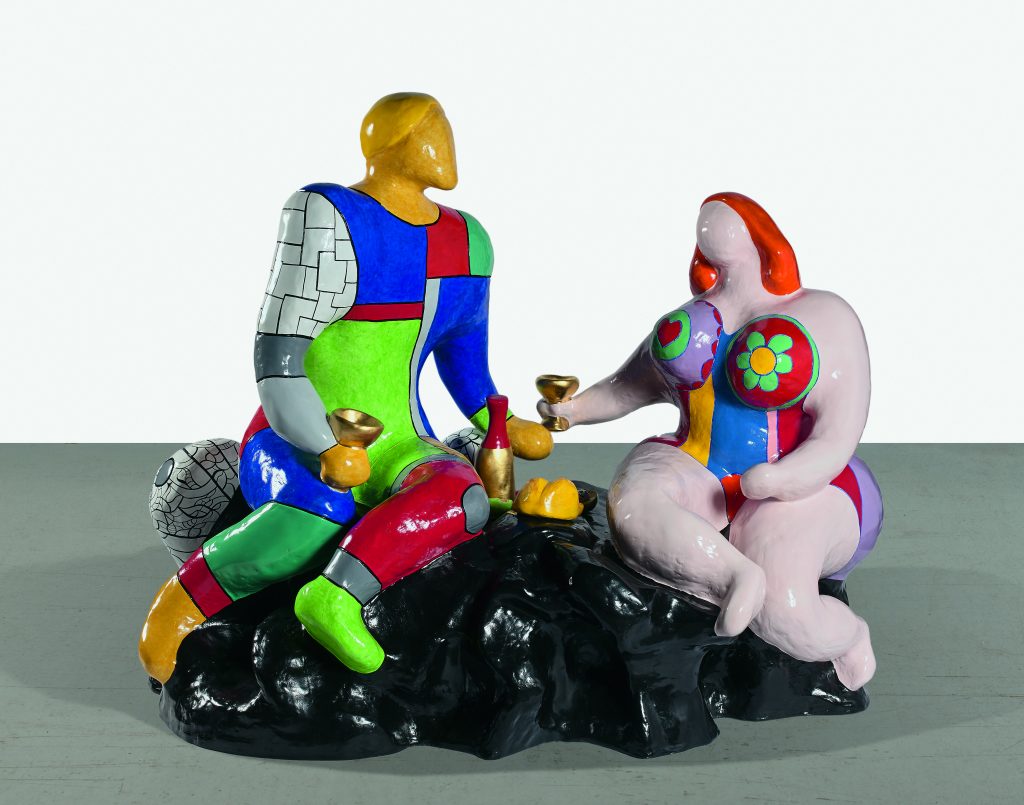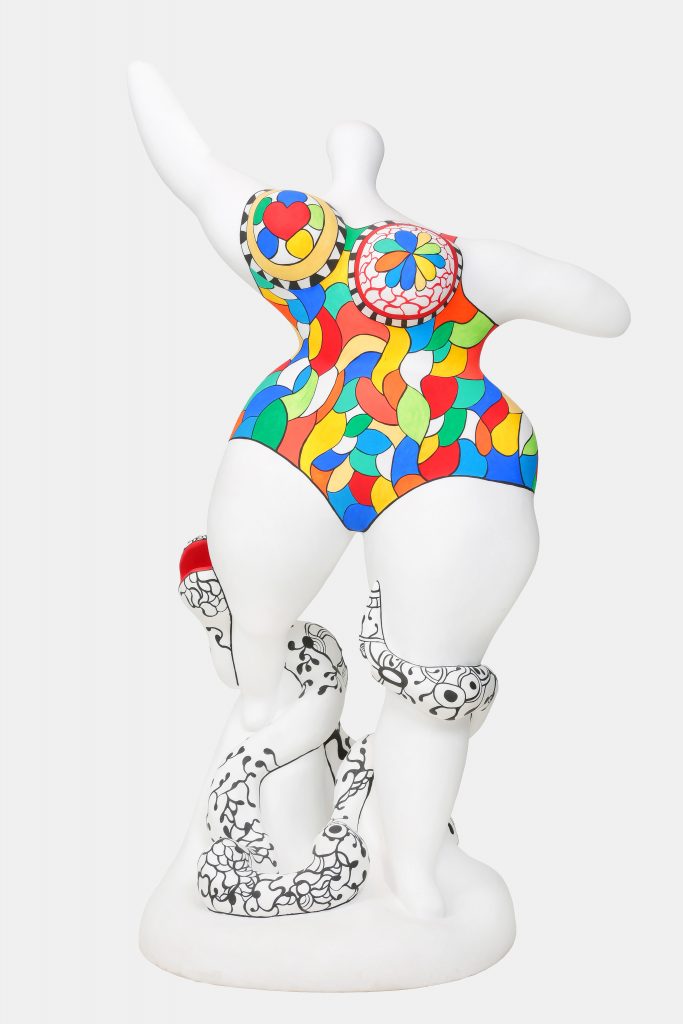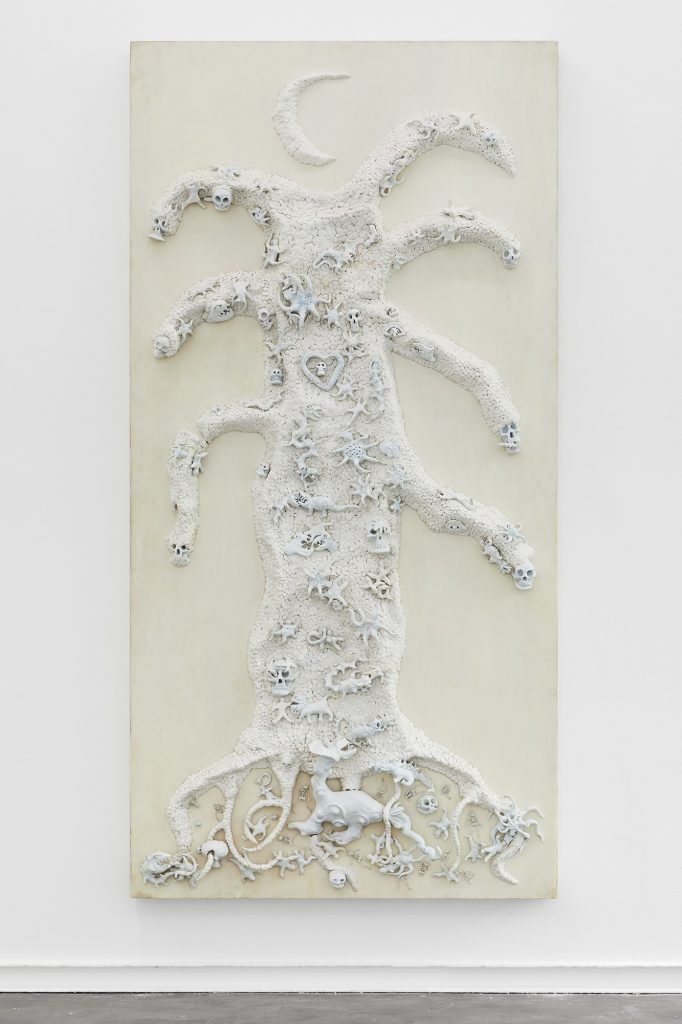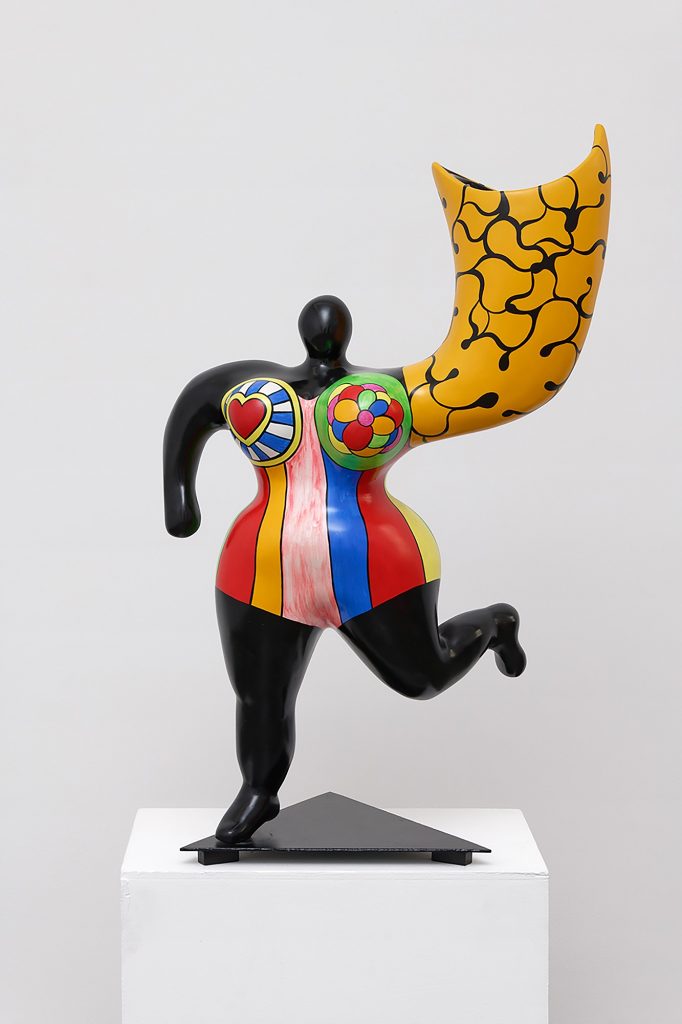Born in Neuilly-sur-Seine, France, in 1930, Niki de Saint Phalle had a chaotic and difficult childhood living between France and America. Raised in the aftermath of the great depression, she later recounted the traumas of her youth, including years of being sexually abused by her father. At a young age, she began to rebel against the conservative, upper-class mentalities of her family. She began a brief career as a model at the age of 18, the same year she married the writer Harry Mathews. The couple moved to Paris and soon Saint Phalle began to make art, finding solace and catharsis in creation.
One of Saint Phalle’s greatest influences was Antoni Gaudí, seen in her use of a bright color palette and whimsical motifs. This inspiration is most apparent in her masterpiece of monumental sculpture, the Tarot Garden in Tuscany. Saint Phalle was also interested in the cutting-edge work of the American Abstract Expressionists and French Nouveau Realists, whose ranks she soon joined.
Paradis Retrouvé (Paradise Found) includes around 30 pieces by Niki de Saint Phalle. To walk through the gallery is to be consistently charmed, delighted, and surprised. The pieces, nearly all sculptures, are diverse in their scale and material. Yet they all contain Saint Phalle’s signature humor and a deep sense of emotion. Many contain unexpectedly dark twists, like a small sculpture of a dragon, who, upon closer inspection, is in the process of eating a human.
Saint Phalle’s work has often been discussed as naïve, or art brut. And while it is true that she was an autodidact, her work is in no way uninformed by art history. Take, for example, one of Saint Phalle’s major artistic preoccupations: the female form. Many of Saint Phalle’s most well-known works are her Nanas, colorful, joyful sculptures of women that bring to mind fertility goddesses. They are named after a French slang term for woman (think “chick”, or whatever you’d call your best girlfriend). Painted in bright colors, they are kinetic, jumping, flying, and hanging upside-down.
Saint Phalle also enjoyed showing the first Nana, Eve, depicted in the garden of Eden with the snake, another reoccurring motif for the artist. Recalling back to her rebellious youth, Saint Phalle created unflinchingly feminist works that questioned traditional depictions of women in art history. Activism wasn’t just a theme in her work, it could also be its goal, seen in a children’s book about AIDS on display, entitled You Can’t Catch it Holding Hands.
A highlight of the exhibition was a work entitled Spider. The large bronze panel immediately brings to mind Rodin’s Gates of Hell and stands in stark juxtaposition to the bright and colorful works that surround it. The work consists of many small characters: grimacing faces, swastikas, soldiers, and crocodiles. Together, they create a nightmarish whole. A similar shock comes from White Tree, a stark work like a bas-relief that depicts a tree adorned with skulls, yet also hearts.
Illustrated by the impressive Spider, Saint Phalle experimented with many different materials during her career. In doing so, she interrogated their hierarchy. Works in marble are shown next to sculptures in mâché and styrofoam. Several pieces blur the line between decorative and fine arts, like a sculpture of a camel that is also a planter, and her sculptures of angels that double as vases. She plays with shadows in Le Falcon Bleu, a work that also incorporates lightbulbs. Nothing is as it seems, and everything is art.
As I was leaving the gallery, a work I had previously missed caught my eye. It was an enormous kite in the shape of a bird, with one of Saint Phalle’s signature Nana figures wrapped around its torso. A perfect last glimpse of an artist for whom the most quotidian object was a possibility for art, and for joy.
Paradis Retrouvé will be at Opera Gallery, Paris, France until November 30, 2022. More information here.
